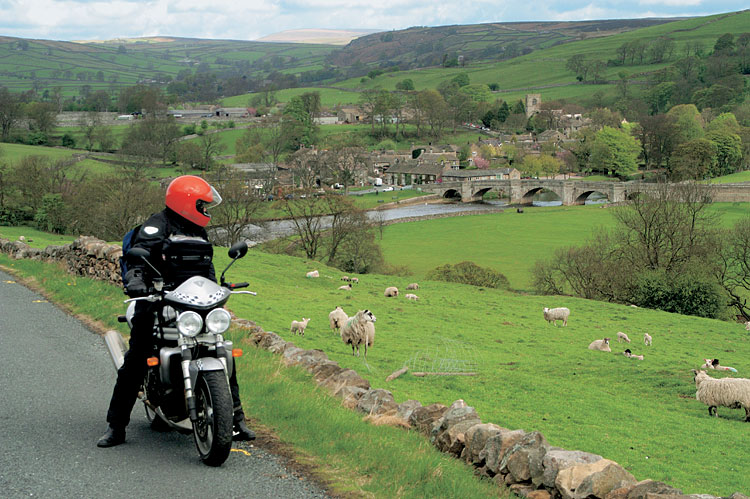England: Dales, Peaks, and Moors

The grunginess of West Yorkshire's Victorian mill towns stands in stark contrast to the idyllic Derbyshire villages we've passed during the day. Lynn, Nigel, and I left our B&B in Ashbourne at the southern end of the Derbyshire dales and zigzagged north toward our first overnight stop in Haworth, Yorkshire.
I met my riding companions when they were touring in the Canadian Rockies, and they readily agreed to be my local guides for this ride. Living on the outskirts of Sheffield in West Yorkshire, these keen motorcyclists know the surrounding countryside well, and while I could have found my way around with a map, Nigel's local knowledge ensures we ride the best roads. They're both gripping Nigel's 1999 Sprint ST and I've borrowed a 2003 Speed Triple from Triumph that's decked out with optional dress-up bodywork.
England's backbone, the Pennine Hills, rise in the Derbyshire dales, continuing north into Scotland. Hills, not mountains - the highest point in the British Isles, Ben Nevis, stands only 4,400 feet - and most of the Pennines' peaks range below 1,000 feet. From rolling cornfields in the south, the Pennine landscape becomes high, open moorland going north into Yorkshire. The rocky landscape is dotted with high fells and lined with dry stone walls - low, mortar-less walls built from interlocking slabs of rock. Traditionally this is sheep farming country, where hardy farmers eking subsistence here for centuries have provided the raw material for Yorkshire's woolen mill towns. A popular walking trail, the Pennine Way follows the crest of these hills north to Hadrian's Wall on the Scottish border.

The Town That Wasn't There
We turn off the B6012 into the grounds of Chatsworth House, a stately pile built in the eighteenth century in the Greek Ionic style for the Duke of Devonshire. The grounds and gardens are the handiwork of Lancelot "Capability" Brown, the champion of natural or "English" landscapes. Brown's employer, the fourth Duke, also decided one day he no longer cared to look at the meager peasant houses of the Edensor (Enn-zer) villagers. Soon the houses were demolished - one can only imagine what the inhabitants thought - and a new hamlet built on the far side of the Derwent River, out of the Duke's offended sight. The new village had to have been an improvement though - even today it's a pleasingly neat collection of sturdy houses built of local stone.